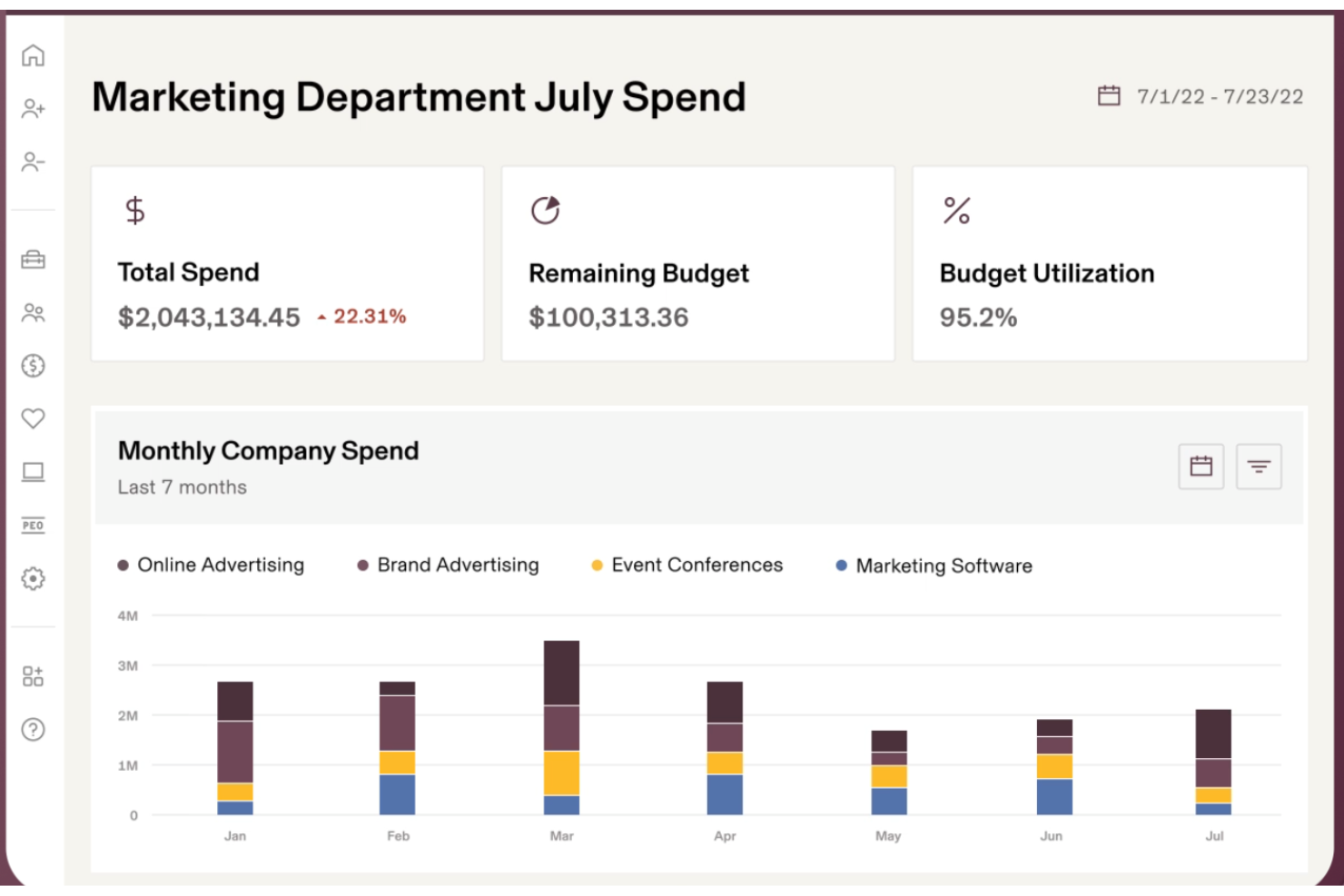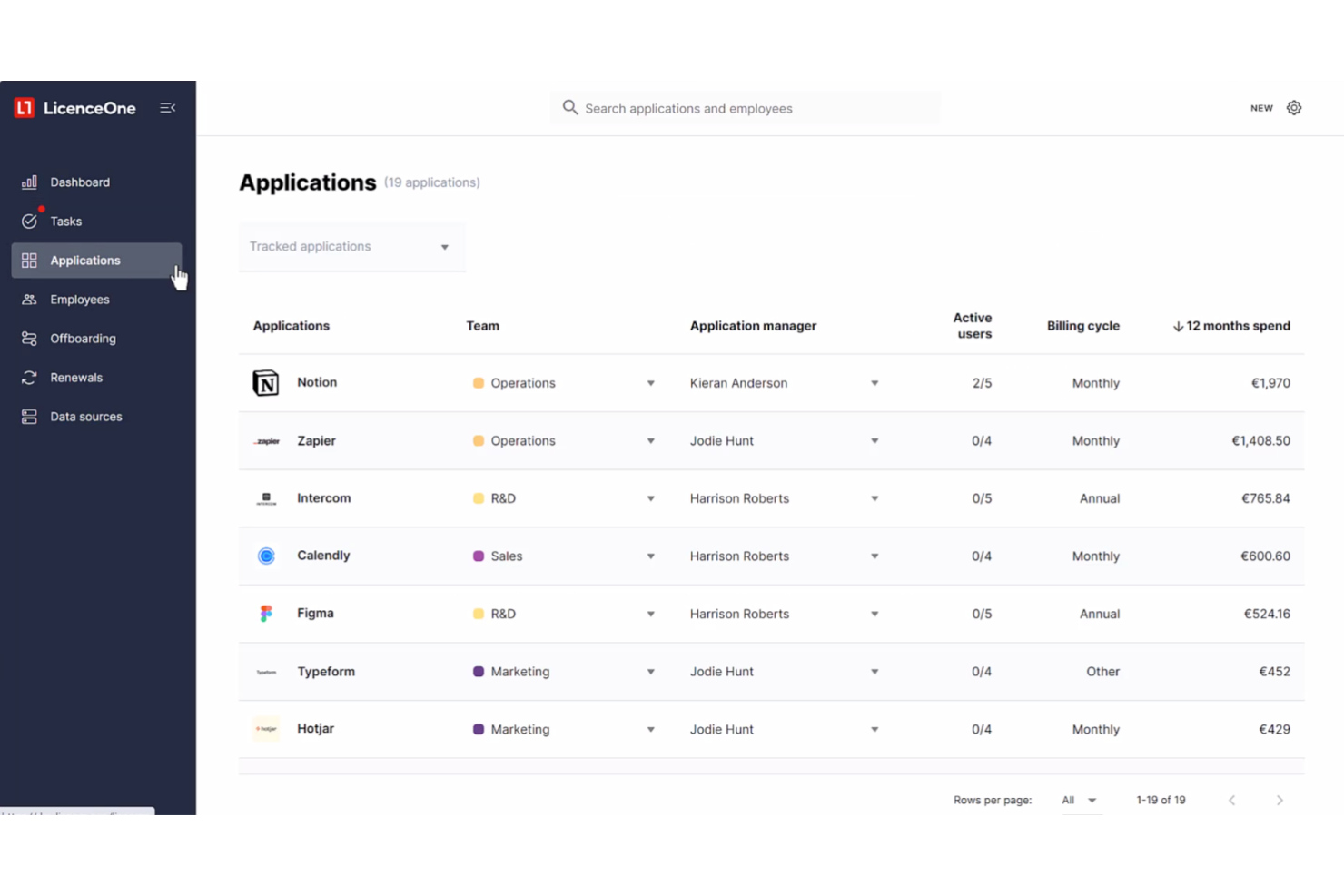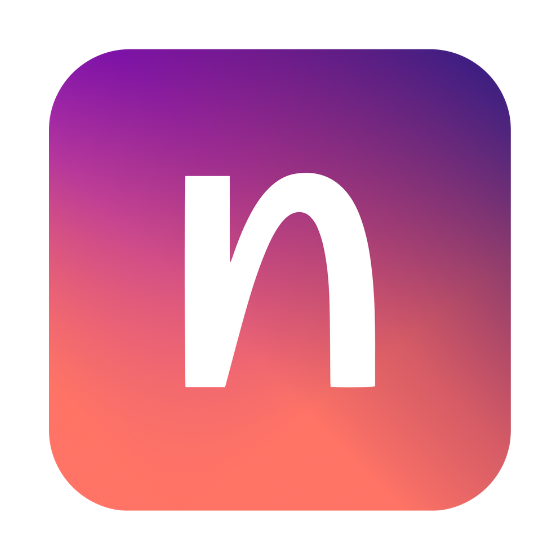10 Best Expense Tracking Software Shortlist
Here's my pick of the 10 best software from the 19 tools reviewed.
There are so many different expense-tracking solutions out there, so selecting the best one can be tricky. You want to streamline the process for tracking and categorizing expenses, allowing for accurate financial analysis and reporting - and need the right tool for your projects and team. I've got you covered! In this post, I use my personal experience with expense tracking in large teams to review a curated list of the best expense tracking software.
What is Expense Tracking Software?
Expense tracking software is a digital solution that automates and optimizes the monitoring and management of business expenses. It allows organizations to efficiently track and record various expenses incurred by employees, facilitating better financial control and transparency. This is mainly accomplished through diverse features that include receipt capture, categorization of expenses, real-time expense monitoring, integration with financial systems, and reporting.
Finance departments, small business owners, employees, and freelancers often use expense tracking to reduce manual errors, improve compliance with expense policies, and enhance visibility into spending patterns
Overviews Of The 10 Best Expense Tracking Software
Here’s my assessment of each tool that I chose for the top list and what I think it does best.
Rippling is a workforce management platform that integrates HR, IT, and finance functions into one system.
Why I picked Rippling: Rippling provides a comprehensive solution for expense tracking within its broader workforce management platform. The expense tracking software features corporate cards, expense management, and bill pay, enabling businesses to control and report on their spending in one centralized location.
Rippling Standout Features and Integrations
Features include tools for automatic receipt matching, employee reimbursement, and real-time reporting, which help businesses manage their expenses efficiently.
I also like that the platform includes tools for payroll, benefits management, time and attendance tracking, performance management, and employee surveys, as well as solutions for app and device management.
Integrations include GitHub, Google Workspace, Greenhouse, Jira, and Zendesk,
Pros and cons
Pros:
- Helpful customer support services
- Smooth onboarding process
- Easy payroll processing
Cons:
- Limited customization options
- Reporting features could be improved
LicenceOne is a SaaS management platform designed to help companies manage their software subscriptions and optimize their spending. It provides features for app discovery, cost optimization, spend management, and user offboarding, with a strong emphasis on security measures to protect user data.
Why I picked LicenceOne: I chose LicenceOne because it provides a comprehensive suite of features tailored for cost optimization, spend management, and app usage tracking. These capabilities are crucial for companies looking to manage their expenses effectively. Moreover, the platform offers human support and prioritizes security, which are essential aspects for any financial tool.
LicenceOne Standout Features and Integrations:
Features include app discovery to automatically detect and update all online applications used within a company, cost optimization by identifying unused or underutilized licenses, and spend management to track spending by team and history with alerts. Additional features include managing renewals to avoid unexpected charges, tracking app usage to understand active use, and user offboarding to manage access and optimize licenses when employees leave the company.
Integrations include PayPal, Slack, Google Workspace, and Xero.
Pros and cons
Pros:
- Real-time monitoring and notifications for SaaS applications
- License management capabilities
- Automated discovery feature for monitoring SaaS usage
Cons:
- Limited integration with third-party accounting systems
- No negotiation services or discounts for SaaS contracts
Airbase is a spend management platform that gives you high-level insight into how much your company is expensing and on what.
Why I picked Airbase: I like that it has features that allow you to proactively manage your expenses and spending. Instead of finding out about surprise expenses after they’ve occurred, you’ve got spend controls and rule-based expense policies to prevent them in the first place.
Airbase Standout Features and Integrations:
Features include spending limits and budgets, which you can set for different departments or teams. I think this would be a great tool to hold people accountable, as well as proactively give managers a better understanding of how much money they have to work with. I think Airbase’s mobile app makes it easy to capture receipts. It also provides a detailed audit trail for every expense.
Integrations include NetSuite, QuickBooks, Xero, Jira, Ironclad, and Slack.
Pros and cons
Pros:
- Strong focus on control and compliance
- Advanced reporting and analytics
- Easy to reimburse employees
Cons:
- No offline connectivity
- Limited integrations
Navan (formerly called TripActions) is a software that helps companies manage corporate cards, manage travel expenses, and track other operating costs.
Why I picked Navan: I think Navan stands out as the best solution for tracking travel expenses. I was impressed by its group travel features and user-friendly interface.
Navan Standout Features and Integrations:
Features include simplified online booking. I like how you can make employee flight and hotel reservations within the software. The group travel options allow you to book travel arrangements for up to 50 employees at a time.
I was impressed by Navan’s automated expense management. It automatically categorizes and reconciles transaction details whenever a company card is used in person or online.
Integrations include Slack, QuickBooks, NetSuite, Okta, Expensify, and Sage Intacct.
Pros and cons
Pros:
- Automated reconciliation simplifies the expense reporting process
- Easy to integrate with various travel booking platforms
- Intuitive interface
Cons:
- May be too complex for small businesses
- Pricing details aren’t transparent
Zoho Expense is a standalone travel and expense management software created by the same company as the popular Zoho Books accounting software.
Why I picked Zoho Expense: Zoho Expense gives you access to a huge library of 3rd party integrations and ad-ons that can be used in tandem with their software.
Zoho Expense Standout Features and Integrations:
Features include Zoho Expense’s ability to scan receipts and import them in bulk. I like that your receipts are digitally stored within the software as well, so you don’t have to worry about losing paper copies.
Zoho Expense also has some of the best mileage tracking tools I came across. Employees have the option to enter their mileage via Android, iPhone, or Apple Watch.
For companies already using Zoho Books for accounting, I think Zoho Expense seems like it might be a good fit.
Integrations include QuickBooks, Xero, GetThere, Lyft, Uber, HSBC, Slack, Dropbox, Office 365, and a few more.
Pros and cons
Pros:
- Mobile app for scanning and tracking receipts
- Easy to learn and use
- Integration options
Cons:
- Limited features on free plan
- No single-user plan (3 user minimum)
Despite its name, TravelPerk doesn’t just handle travel expenses. It offers a variety of expense management tools and features.
Why I picked TravelPerk: If you want expense tracking software with lots of features, I think TravelPerk is an option worth considering. I like that you get unlimited users, as other per-software user costs can really start to add up.
TravelPerk Standout Features and Integrations:
Features include one interface for your travel booking, expense tracking, and reimbursement. I personally like having access to everything in one centralized place. TravelPerk allows you to book within the app, capture and manage your expenses while booking flights, accommodations, and transportation.
Integrations include Slack, Divvy, Rydoo, WeWork, Ramp, Expensify, Fyle, Zoom, and a few others.
Pros and cons
Pros:
- User-friendly interface
- Booking tools
- Flat fee
Cons:
- Customizations are limited
- Mobile app could be more user-friendly
Divvy is a free expense tracking software.
Why I picked Divvy: Divvy is totally free to use. They don’t offer any paid plans. So how does Divvy make any money? They get a cut of the merchant fee that would normally go to Visa or the issuing bank whenever you use their credit card.
Divvy Standout Features and Integrations:
Features include a totally free expense tracking software, a corporate card, that even offers rewards. I like the idea of being able to manage all of the company’s cards and expenses in one place. Divvy’s software allows you to create budgets and control spending. I think the Divvy dashboard makes it easy to see all expense transactions in real time.
Integrations include QuickBooks, NetSuite, Sage Intacct, and Slack.
Pros and cons
Pros:
- Includes free physical and virtual corporate cards
- User-friendly mobile app
- Totally free
Cons:
- Fewer features than paid alternatives
- Limited integrations
Fyle is an expense-tracking software with machine learning and AI.
Why I picked Fyle: It seems to me like Fyle is the expense tracking software that’s the most up-to-date when it comes to the latest technology
Fyle Standout Features and Integrations:
Features include flexible expense reporting. I love that Fyle works inside of everyday apps like Slack, Gmail, Outlook. Employees can submit their receipts in whatever way they prefer, and Fyle will extract and code the data. You can reimburse employees using ACH payments within the software, and they can track the payment status themselves.
I also like that Fyle integrates with most credit card companies and popular accounting software to help automate account reconciliations.
Integrations include Office 365, Slack, Xero, QuickBooks, NetSuite, Microsoft Teams, and TravelPerk.
Pros and cons
Pros:
- Can submit expenses many different ways
- Ability to send ACH payments
- Automation features
Cons:
- Limited integrations on standard plan
- No single-user plan (minimum five users)
Coupa is a cloud-based business spend management platform that helps with procurement, invoicing, and expense management processes. It offers a range of features designed to simplify and automate various aspects of business spending, like automated approval workflows, compliance tracking, and receipt management.
Why I picked Coupa: I think Coupa is uniquely strong in its supplier integration capabilities. If you’re looking to collaborate with your suppliers, then you might want to check out Coupa.
Coupa Standout Features and Integrations:
Features include electronic invoicing, supplier portals, and automated reconciliation features. Advanced optical character recognition (OCR) technology automatically imports data from receipts and summarizes it into an expense report.
I was impressed by the way Coupa’s AI features can automatically assign a risk score to each expense report to help reduce fraud.
You can reimburse employees for expenses directly from within Coupa, instead of having to include reimbursement on the next payroll cycle, which I think employees would appreciate.
Integrations include SAP, Oracle, and NetSuite.
Pros and cons
Pros:
- Highly scalable and flexible
- Simple, aesthetically pleasing interface
- Easy for IT to set up and configure
Cons:
- Steep learning curve
- Limited integrations aside from ERPs
Expensify is an expense management system that claims it can reduce your company’s time spent tracking, organizing, submitting, approving, and reconciling expenses by up to 75%.
Why I picked Expensify: I think the Expensify app would save the average employee a ton of time when it comes to tracking their expenses and managing receipts.
Expensify Standout Features and Integrations:
Features include one-click receipt scanning. A convenient feature I noticed is that if you use one of their Expensify cards, you don’t need to capture receipts at all because it feeds right into the software.
You can take a photo of a receipt with your smartphone, and the software automatically scans and captures the data, then prepares the expense report for you.
I like that Expensify can help with audit and compliance as well. It can automatically detect duplicate receipts, confirm that exchange rates are accurate, and help you customize expense approval workflows so that expenses over a certain dollar amount require additional manager approvals.
Integrations include QuickBooks, NetSuite, Xero, BILL, Gusto, Zenefits, Uber, Lyft, Delta, Taxback International, and a dozen others.
Pros and cons
Pros:
- Detailed expense reports
- Simple, visually intuitive interface
- Mobile app for receipt capture
Cons:
- More costly than similar alternatives
- Limited customization options
| Tools | Price | |
|---|---|---|
| Rippling | From $8/user/month (billed annually) | Website |
| LicenceOne | From €1/employee/month + €10 base fee/month | Website |
| Airbase | Pricing upon request | Website |
| Navan | Pricing upon request | Website |
| Zoho Expense | From $45/user/month | Website |
| TravelPerk | Pricing upon request | Website |
| Divvy | Free | Website |
| Fyle | From $8.99/user/month | Website |
| Coupa | From $11/user/month. | Website |
| Expensify | From $5/user/month | Website |

Compare Software Specs Side by Side
Use our comparison chart to review and evaluate software specs side-by-side.
Compare SoftwareOther Options
Here is some other expense tracking software that didn’t make my shortlist but is still worth checking out.
Selection Criteria For Expense Tracking Software
Wondering how I decided which expense tracking software was best?
First, I looked at the basic functionality that most expense tracking software on the market is currently offering.
Core Functionality
Here are the basic functions the products need to provide to make it onto my list:
- Expense entry and categorization
- Receipt capture and storage
- Reporting and analytics
- Integration with existing financial systems
- Approval workflows
- Policy compliance checks
Key Features
- User-friendly interface: A user-friendly interface ensures ease of use and smooth navigation, allowing users to quickly and intuitively enter and manage expenses without unnecessary complexities.
- Receipt capture methods, ideally with OCR technology: The software should support receipt capture through various methods such as uploading images, email forwarding, or mobile scanning. Additionally, incorporating OCR technology enables the automatic extraction of relevant data from receipts, reducing manual data entry.
- Customizable categorization and tagging: The software should provide customizable expense categories and tags to allow users to classify expenses based on their specific needs and reporting requirements. This ensures consistent tracking and easy filtering of expenses for reporting purposes.
- Variety of reporting and analytics options: The software should offer a range of reporting options, including pre-built templates and customizable reports, to provide insights into spending patterns, expense breakdowns, and other relevant financial metrics. Advanced analytics features, such as data visualization and trend analysis, further enhance the understanding of expense data.
- Mobile apps and offline functionality: Mobile apps for iOS and Android platforms allow users to capture receipts, enter expenses, and manage their expense reports conveniently on the go. Offline functionality ensures users can continue working even when not connected to the internet, with data syncing once a connection is restored.
- Customizable approval workflows: The software should enable the configuration of customizable approval workflows, allowing businesses to define specific approval hierarchies, policies, and rules. This ensures proper authorization and compliance with company spending policies.
- Multi-currency support and currency conversion: Supporting multiple currencies and automatic currency conversion simplifies the management of international expenses. The software should have up-to-date exchange rates and the ability to convert expenses into the desired reporting currency.
- Security and data privacy: Encryption, secure data storage, and role-based access controls ensure the protection of sensitive financial information and comply with data privacy regulations (e.g., GDPR).
Usability
I prioritized tools that had intuitive, modern-looking, and easy-to-use interfaces, particularly for mobile apps. Employees who are using these tools won’t necessarily have a background in finance, so apps should be clean and simple enough for the average person to understand.
Integrations
It’s very important that expense tracking software integrates with popular existing ERPs and accounting software that companies are likely to use. It’s a nice bonus if they also integrate with other common programs like Slack or Dropbox, as well as travel booking apps.
People Also Ask
Here are my answers to some common questions people have about expense tracking software.
Who uses expense tracking software?
Expense tracking software is used by businesses of all sizes, from startups to large enterprises.
Within an organization, a finance or accounting team is typically in charge of managing expenses. Expense tracking software is predominantly used to monitor and manage travel expenses incurred by employees, contractors, or departments.
What’s the difference between expense tracking and accounts payable software?
Expense tracking software is specialized in dealing with recording, categorizing, and managing employee expenses. It includes features for capturing receipts and submitting expense reports for reimbursements.
Accounts payable software is more broad. It involves managing payments to suppliers and vendors. This includes processing invoices, scheduling and issuing payments, and bank reconciliation.
What are the benefits of using expense tracking software?
A good expense tracking software can help to save your business time and money. It reduces manual data entry and dealing with expense reports. It can also help to improve accuracy and compliance, as well as provide real-time visibility into spending patterns and trends.
Other Business Software Reviews
Here are a few of our latest reviews of some other business software:
Accounts Payable Automation Software
Conclusion
The right expense tracking software for your company will depend on what you’re looking for. If you deal with a lot of travel expenses, you may look at options like Navan or TravelPerk. If you’re a startup or small company, Brex or Zoho Expense might be a better option.
After reading my reviews above, I hope you now have a better idea of which expense tracking software is the right choice for your situation.
For the latest tech news, accounting and finance resources, and insights from financial leaders, be sure to sign up for our weekly newsletter.




















